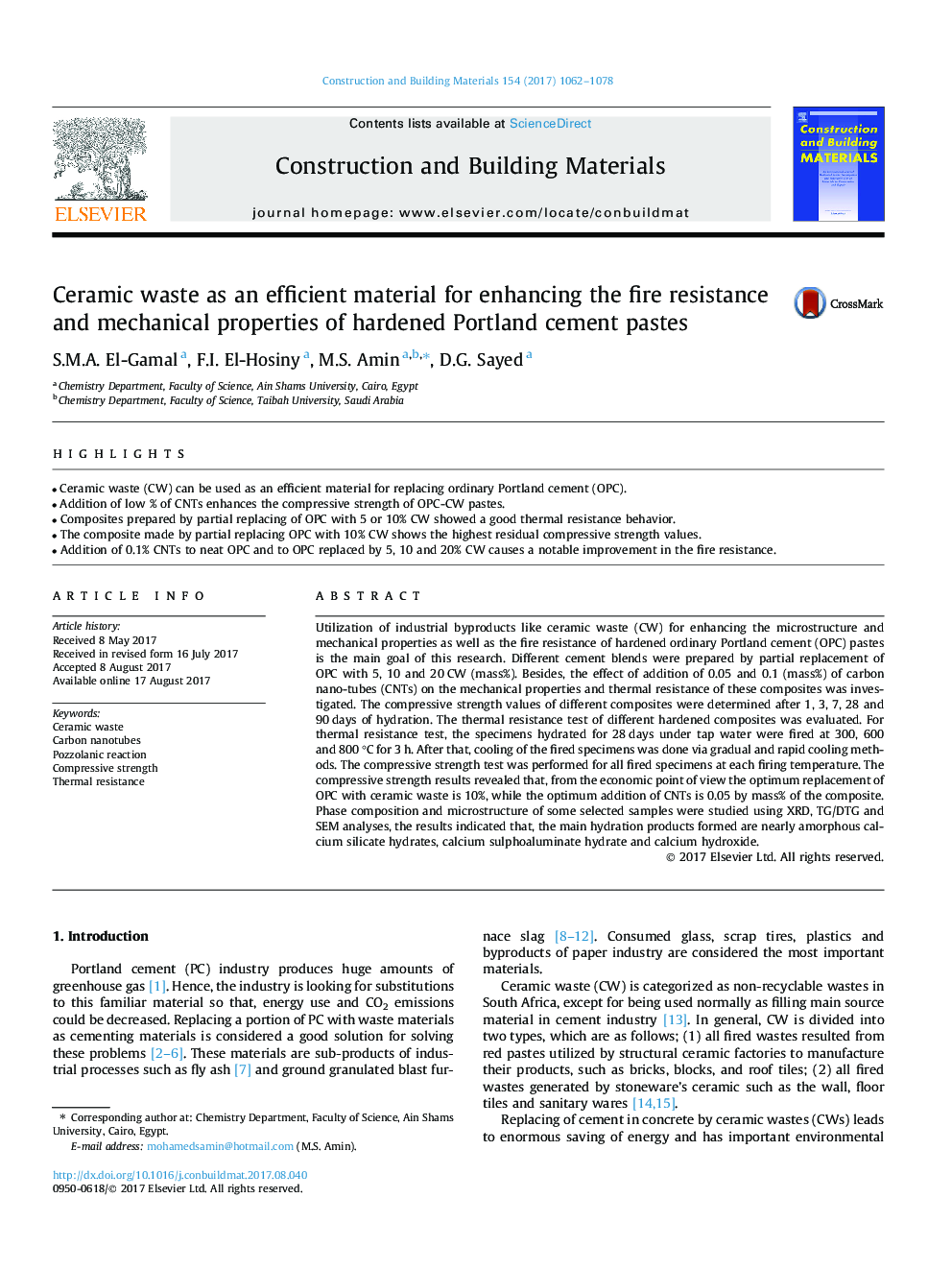| Article ID | Journal | Published Year | Pages | File Type |
|---|---|---|---|---|
| 6480260 | Construction and Building Materials | 2017 | 17 Pages |
â¢Ceramic waste (CW) can be used as an efficient material for replacing ordinary Portland cement (OPC).â¢Addition of low % of CNTs enhances the compressive strength of OPC-CW pastes.â¢Composites prepared by partial replacing of OPC with 5 or 10% CW showed a good thermal resistance behavior.â¢The composite made by partial replacing OPC with 10% CW shows the highest residual compressive strength values.â¢Addition of 0.1% CNTs to neat OPC and to OPC replaced by 5, 10 and 20% CW causes a notable improvement in the fire resistance.
Utilization of industrial byproducts like ceramic waste (CW) for enhancing the microstructure and mechanical properties as well as the fire resistance of hardened ordinary Portland cement (OPC) pastes is the main goal of this research. Different cement blends were prepared by partial replacement of OPC with 5, 10 and 20 CW (mass%). Besides, the effect of addition of 0.05 and 0.1 (mass%) of carbon nano-tubes (CNTs) on the mechanical properties and thermal resistance of these composites was investigated. The compressive strength values of different composites were determined after 1, 3, 7, 28 and 90 days of hydration. The thermal resistance test of different hardened composites was evaluated. For thermal resistance test, the specimens hydrated for 28 days under tap water were fired at 300, 600 and 800 °C for 3 h. After that, cooling of the fired specimens was done via gradual and rapid cooling methods. The compressive strength test was performed for all fired specimens at each firing temperature. The compressive strength results revealed that, from the economic point of view the optimum replacement of OPC with ceramic waste is 10%, while the optimum addition of CNTs is 0.05 by mass% of the composite. Phase composition and microstructure of some selected samples were studied using XRD, TG/DTG and SEM analyses, the results indicated that, the main hydration products formed are nearly amorphous calcium silicate hydrates, calcium sulphoaluminate hydrate and calcium hydroxide.
